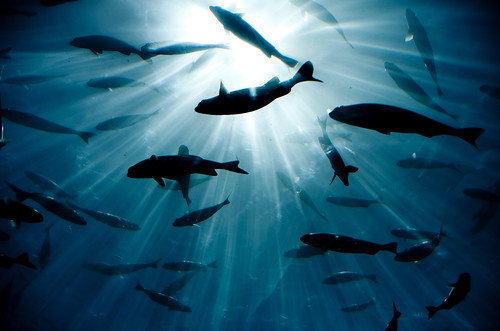 The 16th meeting of the Conference of the Parties (CoP) will be held from March 3–14, 2013, in Bangkok, Thailand. CITES is widely recognized as one of the most effective and best-enforced international conservation agreements. It offers protection to more than 30,000 species around the globe and has been instrumental in preventing the extinction of numerous plants and animals.
The 16th meeting of the Conference of the Parties (CoP) will be held from March 3–14, 2013, in Bangkok, Thailand. CITES is widely recognized as one of the most effective and best-enforced international conservation agreements. It offers protection to more than 30,000 species around the globe and has been instrumental in preventing the extinction of numerous plants and animals.During CITES this year, government representatives will vote on proposals to list under the CITES Appendices a record number of shark and rays species, including the oceanic whitetip shark, the porbeagle, three types of hammerheads, both manta rays, and the freshwater sawfish. All of these species are classified by IUCN as threatened. Existing limits are insufficient to reverse declines in their populations.
Sharks and rays are at great risk across the globe. Most species grow slowly, mature late, and produce few young, leaving them particularly vulnerable to overfishing. The IUCN classifies roughly one-third of assessed shark and ray species as threatened or near threatened. This depletion threatens ecosystems, livelihoods, and, in many cases, eco-tourism.
Oceans inc will be closely following the progress of these proposals and finding out whether it will be the year for sharks and rays at CITES 2013. A team will be broadcasting from the CoP, so for all the latest news and information visit Oceans inc.
For more information click here and the www.CITES4sharks.org website launches on March 1st.
The oceanic whitetip shark (Carcharhinus longimanus), proposed for Appendix II, is:
- taken incidentally in pelagic tuna and swordfish fisheries worldwide;
- retained primarily due to international demand for fins;
- readily identifiable in trade by its distinctive white-tipped, rounded fins.
The scalloped hammerhead shark (Sphyrna lewini), proposed for Appendix II, is
- among the most endangered, highly migratory shark species;
- taken primarily for its exceptionally valuable fins in largely unregulated fisheries;
- traded along with similar great and smooth hammerheads (also proposed for listing).
The porbeagle shark (Lamna nasus), proposed for Appendix II, is:
- severely depleted in major parts of its range;
- highly valued for its meat, particularly in Europe, as well as its fins;
- highly migratory yet lacking protection on the high seas.
The manta rays (Manta spp.), proposed for Appendix II, are:
- exceptionally vulnerable due to their slow, predictable movements and very few young;
- increasingly fished for their gill rakers which are used in a Chinese health tonic;
- a source for long-term economic benefits from ecotourism.
The freshwater sawfish (Pristis microdon), proposed for transfer from Appendix II to I, is:
- Critically Endangered and nearly extirpated in most of its former Indo-West Pacific range;
- valuable for aquarium display, fins, and its toothed snout (rostrum);
- the only Pristis species not yet listed and protected under CITES Appendix I
Image courtesy of digitizedchaos via Flickr (CC BY 2.0)
